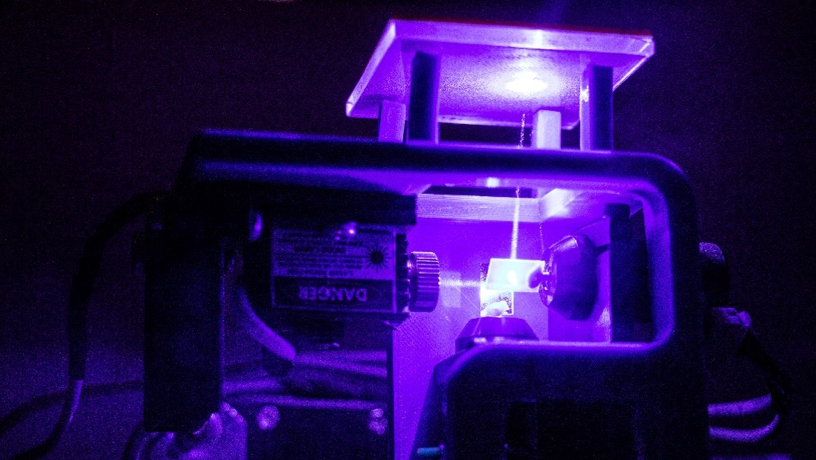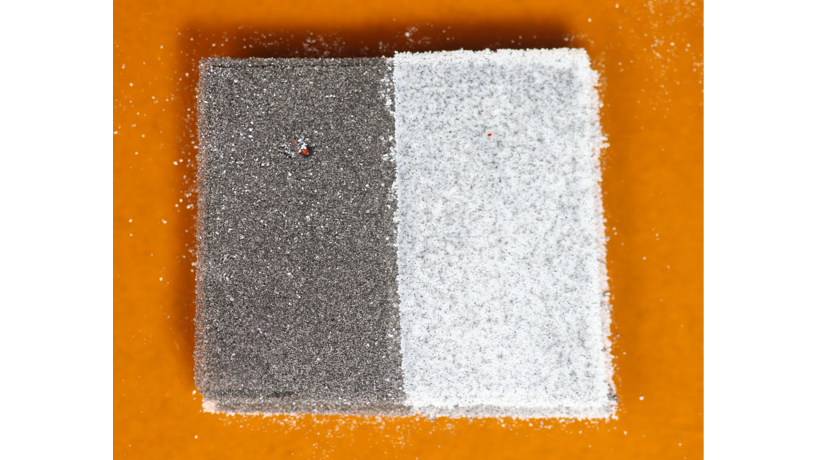Columbia Researchers Develop Multi-Material SLS 3D Printer without Powder Bed
Printing a part that is made of multiple materials has been possible with fused deposition modeling and inkjet 3D printing technologies, though not so much with selective laser sintering (SLS), where a part is constrained to a single uniform material. Multi-material powder 3D printing, while not a new concept, had been challenging to develop up until now.
In the first quarter of this year, Belgian manufacturer Aerosint announced successful tests in printing bi-metallic parts using stainless steel and copper alloys, and is working to develop its proprietary laser powder bed fusion technology that combines metals and polymers, separately or simultaneously, including PEEK, PPS, and potentially ceramics and organic materials. Advancing 3D printing technologies such as SLS, to include multi-materials, would expand their scope far beyond the applications and possibilities of single material parts–which is what most real-world parts are like.
Researchers Hod Lipson and John Whitehead at the Department of Mechanical Engineering at Columbia University (U.S.) have developed a novel method using an inverted laser and transparent glass plates to print multi-material parts using SLS technology. In their SLS approach, the laser does not point downward into the powder bed, but upward.
Instead of the powder bed, thin layers of powder material are coated onto glass plates, and the laser is directed through a bottom glass plate to fuse the layer. The plate with the selectively fused material (using a pre-programmed virtual blueprint) then lifts and moves to another plate, coated with a different material, and the process repeats.
With the selective fusion, and multiple material glass plates (that also eliminate the need for a powder bed, and economizes use of material) parts can be built that either combine materials in one layer, or form a stack of different materials in each layer. To validate their proof of concept, the researchers printed a 2.18 mm, 50 layer thick part using TPU, as well as a multi-material part combining nylon and TPU. Advances such as this in SLS 3D printing are significant, as Lipson points out,
“Now, let me ask you, how many products are made of just one material? The limitations of printing in only one material has been haunting the industry and blocking its expansion, preventing it from reaching its full potential.”
What this approach also allows is a full-view of the printed part as it is being printed – as opposed to only being able to view it (or identify defects) once it emerges and is dusted from the powder bed. John Whitehead explained this limitation,
“…in a standard printer, because each of the successive layers placed down are homogeneous, the unfused material obscures your view of the object being printed, until you remove the finished part at the end of the cycle. Think about excavation and how you can’t be sure the fossil is intact until you completely remove it from the surrounding dirt. This means that a print failure won’t necessarily be found until the print is completed, wasting time and money.”
It is worth noting that Aerosint’s approach, compared to that of the researchers at Columbia, does use powder beds, with a downward pointing laser and multiple rollers to deposit and fuse just the required amount of powder for each layer pattern.
“This technology has the potential to print embedded circuits, electromechanical components, and even robot components. It could make machine parts with graded alloys, whose material composition changes gradually from end to end, such as a turbine blade with one material used for the core and different material used for the surface coatings,” noted Lipson. “We think this will expand laser sintering towards a wider variety of industries by enabling the fabrication of complex multi-material parts without assembly. In other words, this could be key to moving the additive manufacturing industry from printing only passive uniform parts, towards printing active integrated systems,
This is why the team at Columbia Engineering is continuing to expand their research to include resin and metallic materials, with a much wider combination of properties – and perhaps in the near future, the limitations of 3D printing in multi-material parts, at scale, will be eliminated, and businesses or consumers could print real-world parts or devices on-demand, that can actually be used directly from the printer.
Subscribe to Our Email Newsletter
Stay up-to-date on all the latest news from the 3D printing industry and receive information and offers from third party vendors.
Print Services
You May Also Like
Low-cost “Suzy” Polymer Powder 3D Printer is Faster and Cheaper than Past Models
Polish laser powder bed fusion (LPBF) firm Sinterit has released a follow-up to its predecessors, Lisa and Nils, called Suzy, a $19,490 printer equipped with a 30W fiber diode laser....
India’s $58M Space Fund Is a Boon for AM Innovation
India’s space industry is picking up serious momentum. With a projected $44 billion space economy by 2033, the country is aggressively expanding its capabilities, fostering private-sector participation, and reducing its...
Japanese Advanced Manufacturing Capabilities Grow in Europe with Sodick’s Purchase of Prima Additive
The global economy is currently undergoing a reshuffling in terms of what gets manufactured where. In large part, this trend is being driven by new geopolitical alliances and the need...
Bosch Invests €6M into Serial Auto Part 3D Printing
German industrial conglomerate Robert Bosch GmbH, the world’s largest supplier of automotive parts, has announced a new investment into Nuremberg, Germany additive manufacturing (AM) facility. The nearly €6 million in...





























